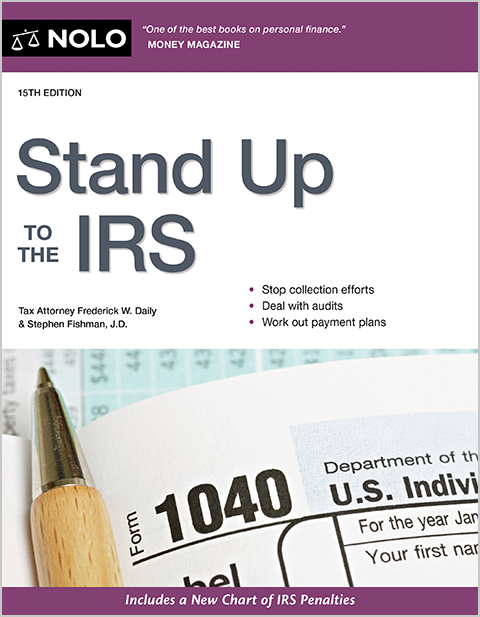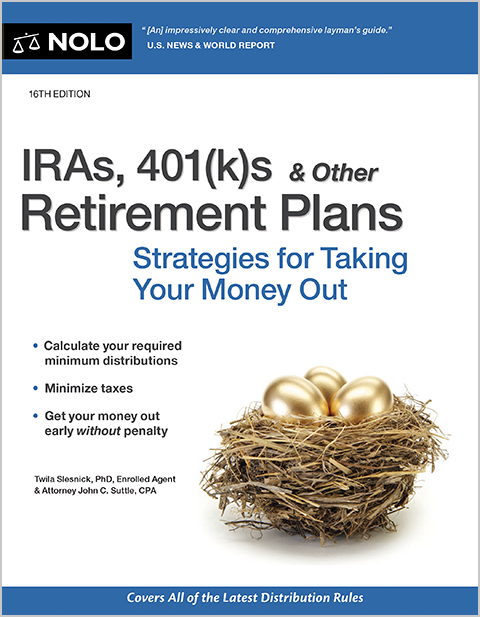Get bigger tax deductions now that 100% bonus depreciation is permanent.
When you buy personal property for your business, such as a car or computer, that lasts for more than one year, you're required to deduct the cost a little at a time over several years. This process is called "depreciation." Depending on the property involved, it can take anywhere from 3 to 39 years to fully depreciate the cost of business property.
In an ongoing effort to help small businesses, small business owners have been allowed to claim first-year "bonus" depreciation for qualifying personal property used for business purposes. Thanks to the One Big Beautiful Bill Act, 100% bonus depreciation is now permanent. This change complements existing tax strategies for deducting expenses, such as Section 179 expensing and the de minimis safe harbor. Understanding the differences between bonus depreciation, Section 179, and the de minimis safe harbor can help you maximize your business deductions.
How Bonus Depreciation Works
Bonus depreciation is a tax incentive that allows businesses to immediately deduct a large percentage of the cost of eligible property in the year it's acquired and placed into service, rather than spreading the deduction over several years. While the exact percentage of bonus depreciation has varied in recent years, in 2025, Congress passed the One Big Beautiful Bill Act, which reinstated 100% bonus depreciation and made it permanent.
History of Bonus Depreciation
For tax years 2015 through 2017, first-year bonus depreciation was set at 50%. It was scheduled to go down to 40% in 2018 and 30% in 2019, and then not be available in 2020 and beyond.
Bonus Depreciation Under the Tax Cuts and Jobs Act and the One Big Beautiful Bill Act
The Tax Cuts and Jobs Act (TCJA), enacted at the end of 2018, increased first-year bonus depreciation to 100%. It went into effect for any long-term assets placed in service after September 27, 2017.
The 100% bonus depreciation amount remained in effect from September 27, 2017 until January 1, 2023. After that, under the TCJA (and as modified by the One Big Beautiful Bill Act) first-year bonus depreciation is phased down to:
- 80% for property placed in service after December 31, 2022 and before January 1, 2024
- 60% for property placed in service after December 31, 2023 and before January 1, 2025
- 40% for property placed in service after December 31, 2024 and before January 20, 2025.
The One Big Beautiful Bill Act made 100% bonus depreciation permanent starting on January 20, 2025. Here's a chart showing how the percentages differ for prior years.
|
Year Property Placed In Service |
Bonus Depreciation Percentage |
|
1/20/2025 and later |
100% |
|
1/1/2025 through 1/19/2025 |
40% |
|
2024 |
60% |
|
2023 |
80% |
|
9/17/2017 through 2022 |
100% |
Bonus Depreciation Made Permanent Under the One Big Beautiful Bill Act
Again, thanks to the One Big Beautiful Bill Act, the bonus depreciation percentage is 100% for property acquired and placed into service on January 20, 2025, and later. In other words, you can deduct the entire cost of property in one year using bonus depreciation. Property placed in service before that date still follows the old (phase-down) rules.
While 100% bonus depreciation was available before, it wasn't on a permanent basis. This sea change in the tax law makes bonus depreciation the go-to method for deducting personal property. Unlike the de minimis safe harbor, bonus depreciation isn't limited to items that cost less than $2,500 ($5,000 for businesses with financial statements).
Can You Elect Not to Take Bonus Depreciation?
Bonus depreciation is optional—you don't have to take it if you don't want to. But if you want to get the largest depreciation deduction you can, you will want to take advantage of this option whenever possible. You can also use bonus depreciation to increase the amount of first-year depreciation available for business vehicles by $8,000.
What Property Qualifies for Bonus Depreciation?
Property qualifies for bonus depreciation only if:
- it has a useful life of 20 years or less (this includes all types of tangible personal business property and software you buy, such as off-the-shelf software but not custom software), but not real property, and
- you purchase it from someone who is unrelated to you (it can't be a gift or inheritance).
Under prior law, you could only use bonus depreciation for new property. The Tax Cuts and Jobs Act has changed that rule, and now you can use bonus depreciation for purchases of new or used property starting in 2018.
What Property Doesn't Qualify for Bonus Depreciation?
Bonus depreciation can't be used for:
- land
- permanent structures attached to land (except for certain improvements)
- inventory
- intangible property, such as patents, copyrights, and
- trademarks, or
- property used outside the United States.
Does Listed Property Qualify for Bonus Depreciation?
If the asset is listed property, it must be used more than 50% of the time for business to qualify for bonus depreciation. Listed property consists of automobiles and certain other personal property. Computers were listed property under prior law but starting in tax year 2018, they're no longer classified as listed property, so there's no over 50% use requirement.
If your business use falls below 51% during the asset's depreciation period (usually five or seven years), you have to give back the bonus depreciation you claimed the first year—a process called "recapture."
Section 179 Expensing (First-Year Expensing)
Section 179 of the tax code is similar to bonus depreciation in that it allows you to deduct in one year the entire cost of personal property you use in your business (as well as certain real property improvements). This is called "first-year expensing" or "Section 179 expensing." ("Expensing" is an accounting term that means currently deducting a long-term asset.)
Section 179 Applies to Property Used Over 50% of the Time for Business
Section 179 may be used to deduct basically the same property as bonus depreciation. However, businesses probably won't use Section 179 much because they can deduct 100% of the cost of the same property using bonus depreciation. Section 179 has the following disadvantages that make it less desirable than bonus depreciation. For one thing, you can only use Section 179 for property you use over 50% of the time for business, which isn't the case with bonus depreciation, except for listed property. If your use of the property falls below 50% you must give back your Section 179 deduction through recapture. There is no such recapture with bonus depreciation except for listed property.
Limitations on Section 179
In addition, you can't use Section 179 to deduct in one year more than your net taxable business income for that year (not counting the Section 179 deduction but including your spouse's salary and business income). Amounts that aren't deductible are carried forward and can be deducted in future years. So, Section 179 may never result in a loss, whereas there is no such limitation on bonus depreciation.
There is also an annual limit on the amount of property that can be deducted with Section 179. The One Big Beautiful Bill Act greatly increased the Section 179 limit to $2,500,000 for 2025. The limit is phased out if the amount of qualifying property you place into service during the year exceeds $4,000,000. The annual deduction limit applies to all of your businesses combined, not to each business you own and run. If you're a partner in a partnership, member of a limited liability company (LLC), or shareholder in an S corporation, the limit applies both to the business entity and to each owner personally.
Section 179 Deductions Aren't Automatic
Unlike bonus depreciation, Section 179 expensing doesn't apply class-wide. So, you may pick and choose which assets you wish to deduct using Section 179 within the same asset class, which is a potential advantage. Section 179 deductions aren't automatic. You must claim a Section 179 deduction on your tax return by completing IRS Form 4562, Part I, and checking a specific box. If you neglect to do this, you might lose your deduction.
De Minimis Safe Harbor vs. 100% Bonus Depreciation
As a result of the One Big Beautiful Bill Act, you can fully deduct many of the same expenses in a single year using 100% bonus depreciation as you can using the de minimis safe harbor. However, the benefit of the de minimis safe harbor is that it's simple. All expenses deducted with the safe harbor are currently deducted as business operating expenses. Unlike with bonus depreciation, you don't have to list safe harbor expenses on IRS Form 4562, Depreciation and Amortization. You don't have to create or maintain depreciation schedules for such property items or include them in your accounting records as assets.
Advantages of Bonus Depreciation
But bonus depreciation has some advantages over the de minimis safe harbor: There is no $2,500 per item limit on bonus depreciation. Also, if you sell property for which you took bonus depreciation, you only pay income tax on your gain, not self-employment tax. This isn't the case when you use the de minimis safe harbor.
Moreover, property deducted with the safe harbor won't count for purposes of taking the pass-through deduction. At higher income levels (for 2025, $197,300 for singles and $394,600 for marrieds filing jointly), the pass-through deduction can be limited wholly or partly to 2.5% of the cost of a business owner's depreciable property. This wouldn't include property you've deducted using the safe harbor but would include property deducted with bonus depreciation.
For this reason, if you want to maximize your pass-through deduction, you might want to avoid using the de minimis safe harbor and use bonus depreciation instead. You elect to use the safe harbor each year, and you can use it some years and not use it others. Alternatively, you could reduce the dollar amount of your de minimis safe harbor election; $2,500 per item is the maximum amount allowed under the safe harbor (unless you have a financial statement). But you can elect to deduct a smaller amount (for example, $1,000 or $500 per item) and use bonus depreciation to deduct more expensive items.
Learn More About Tax Deductions
To learn more about making the most of your small business deductions, get Nolo's Deduct It! by Stephen Fishman, J.D.
Talk to a Tax Attorney
Need a lawyer? Start here.
How it Works
- Briefly tell us about your case
- Provide your contact information
- Choose attorneys to contact you
- Briefly tell us about your case
- Provide your contact information
- Choose attorneys to contact you

